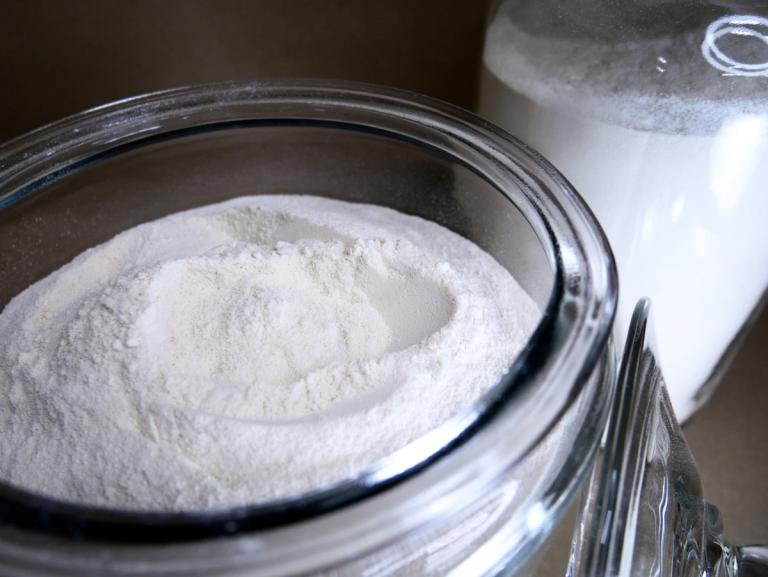
"GRAS" for New Culture Animal-free Casein
Tuesday, Feb 13, 2024
As a relative newcomer to the food and precision fermentation industries (we just celebrated our 5th birthday as a company!), there’s been a lot to learn for the New Culture team. And we’ve had to learn quickly. At first we had to learn the intricacies of producing animal-free dairy proteins - casein in particular - which we were making in extremely small quantities. Then we had to learn how to transform those small amounts of animal-free casein into similarly small amounts of animal-free mozzarella. Of course, that led us to learn how to craft a delicious pizza with our cheese, free from any animal-inputs.
Along the way, we had to learn how to ensure our casein protein was safe for public consumption. This meant understanding the FDA’s “GRAS” notification program - what it entails, why it’s important, how to move through it. GRAS stands for Generally Recognized as Safe, and is an important food safety designation that signifies a novel ingredient can be sold, used, and consumed in the U.S. like any other food ingredient.
We’re thrilled to share that we reached a critical GRAS milestone as part of our tireless efforts to bring our mozzarella to pizza lovers everywhere. We self-affirmed that New Culture animal-free casein is GRAS following a recent review by an independent panel of qualified scientific and toxicology experts (we are planning to notify FDA of this soon). In fact, this is the first time that an animal-free casein has achieved this designation - another “world’s first” for New Culture! Having GRAS status for our casein (which is the key ingredient in our animal-free mozzarella) puts us one massive step closer to our launch later this year at Nancy Silverton’s Pizzeria Mozza in Los Angeles.
From then to now
Getting to this point took a good amount of learning. At first glance, the path to this GRAS milestone seemed pretty straightforward - figure out the process and go through it. But the more time we spent figuring out the process, the more questions we had. How would we collect the necessary data? How would that data need to be analyzed and prepared for review? When could we start? So we began to ask other companies how they approached the GRAS process, what experiences and learnings they had as they went through it. And, since GRAS entails compiling a detailed dossier that is made public, we read other companies’ dossiers to see what might be applicable to New Culture.
After several conversations and “dossier diving,” we developed quite an appreciation for the path to GRAS. What seemed like following a few easy steps was anything but. It was going to take a lot of time and effort across our entire company. Though not only that - it was going to take guidance and counsel from an external partner with significant depth of experience with GRAS. We would need a partner that could identify our blindspots and explain the roadmap in all of its detail and complexity, including how to compile a comprehensive dossier of our own.
A few things we’ve learned
Now that we’ve reached the self-GRAS milestone, we’ve been reflecting on what it took to get to this moment and what we’ve learned along the way. Four themes emerged.
First, the GRAS program views safety in the context of use. In other words, how much of the novel ingredient are people going to eat? Is it a new addition to one’s diet or replacing something else? Do some people eat a lot more than others? The answers to these questions are crucial in understanding the risk profile of the ingredient and, therefore, the safety of the ingredient. This framing of food safety has been foundational for us at New Culture and, as with all companies with GRAS status for an ingredient, was a core component of the GRAS dossier for our animal-free casein.
Another important theme we learned through the GRAS process has been the importance of thinking holistically about how the ingredient is manufactured. It is not merely the inputs and outputs that matter but the vessels and piping and surfaces that help transform the inputs into outputs. Paying close attention to “contact surfaces” is essential. For instance, if there are steel pipes that transport an element of the production process, those steel pipes have to be made out of an approved list of alloys that have been proven safe for food production.
Third: in order to be safe, a manufacturing process has to be reproducible. It’s not enough to be able to produce New Culture casein once, or by using a manufacturing process that changes run by run. Put another way, it’s not enough to demonstrate the production of a clean ingredient one time - it must be demonstrated multiple times. And, the way the ingredient is made has to be consistent every time.
Lastly, there’s an incredible amount of wisdom to be gained through the hard work of other companies that have gone through the GRAS process. By scouring those companies’ dossiers it was possible to get a sense for the sort of evidence that demonstrates food safety. As we began down our own GRAS path, having those sorts of best-in-class examples for industry-standard ingredients helped to orient and prepare us for the task ahead. That’s to say: how to actually go through the process ourselves.
Now that we have self-affirmed that New Culture casein is GRAS, it’s time to put our manufacturing plans to good work. We’re in the midst of bringing food grade production capacity online and getting ready to send our cheese out into the pizza world. There’s still a whole lot more to learn though as we approach commercialization, and we wouldn’t have it any other way.